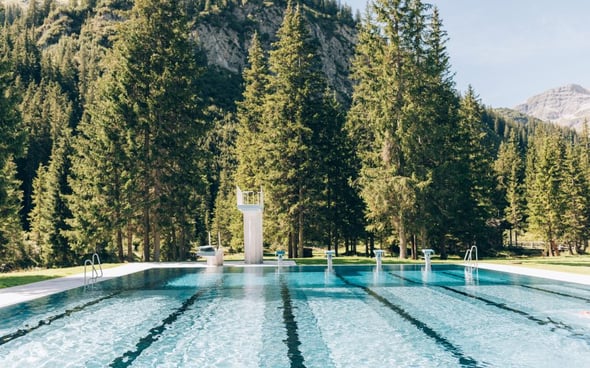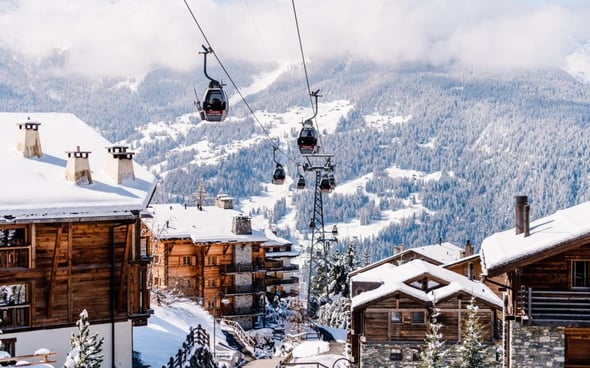Ski Workout Plan: Get fit for skiing in 10 weeks
Skiing is great for improving your fitness. And what better way to get fit for skiing than with a high-impact aerobic sport that involves power, agility and endurance. Skiing can burn up to 500 calories per hour, in theory allowing you to lose around five pounds of weight a week, while toning core muscle groups, benefiting your immune system and significantly improving your mood. However, to get the most out of your time in the mountains, being your fittest before you hit the slopes is always a good idea.
Here is our guide on how to get fit for skiing in just six weeks. This is only a basic set of guidelines, so if you are really serious about performing your best on the slopes, consult a personal trainer.
Aerobic fitness
The first step to becoming fit for the pistes is improving your cardiovascular health. Aerobic fitness activities are absolutely essential to enabling you to build up your stamina for skiing and generally making you more fit. Each day for six weeks, go for a twenty-minute jog, beginning at a low intensity and building up your speed each outing. You could also use a cross trainer machine as this emulates the skiing movement, allowing you to develop muscle memory so that you are ready to ski.
Other activities such as swimming, tennis and cycling are also great for getting your heart and lungs healthy before your holiday. Warm up with some dynamic stretches such as lunges, followed by one aerobic activity every day, beginning at twenty minutes and increasing to forty minutes in five-minute intervals until you feel yourself less short of breath and able to take on the skis.
Core strength
Core strength is possibly the most important element of any fitness routine. You core holds everything in place and enables good balance, so a strong core will prevent injuries and make your skiing more powerful. In order to build your core strength, perform a set of thirty sit-ups and thirty push-ups after your aerobic exercise each day. What many people do not realise is that the best way to getting a toned core is to free-lift heavy weights. Go to the gym and find an instructor to show you how to safely free-lift, and build up the heaviness each session to feel your whole body become stronger in only a month and a half.
Specific muscle building
Skiing requires certain muscle groups to undergo intense activity that we often do not exert to such an extent from day-to-day. So, to prepare yourself for a week of skiing, aim to build strength in your calves and quadriceps through free weight lunges and squats and one leg squats, beginning with only your body weight and building up with weights every few days. Aim to complete twenty-five repetitions of each, maintaining your balance and tensing your core each time.
Skiing is all based around balance and coordination, and these key areas are fundamental in performing your best during sessions, so be sure to build them up as much as possible.
Plyometric training
Many experts recommend that if you are serious about improving your ski performance, before taking to the slopes, you should do some ‘plyometric training’. This is a type of exercise formulated specifically for sports such as skiing, and involves high-intensity, explosive muscle contractions to encourage the contraction and relaxation.
This tends to involve hops, jumps and bounding movements, usually undertaken after the specific muscle building segment of your workout. Perform lateral jumps, taking off and landing with both feet and flexing the ankles, knees and hips whilst keeping a good balance. This mimics the movements of skiing to enhance your muscle response, skiing speed and power to make your runs significantly more impressive.
Flexibility
Flexibility is also key for skiing, as it prevents injuries such as strained muscles and stiffness. You will want to head back to your luxury chalet each evening feeling refreshed and rejuvenated. For this to be the case, work in a set of stretches at the end of your daily exercise routine. Some of the muscles used in skiing are specific to the sport, so it is unlikely that you will have exercised them regularly unless you have already been training.
Stretch your quads by pulling each leg up behind your back the ankle, your hamstrings by placing each ankle on the ground in front of you and lifting up your toes before leaning forward slightly. You can also do lunges, hand-down-spine arm stretches, wall sits and any other stretches you can think of – all when your muscles are still warm, holding the stretch for 30 seconds each time before relaxing. This will improve your agility, and reduce the chances of injury on the slopes.
Personal Diet
It is also important to remember to eat as healthily as possible in the run-up to your ski holiday. Swap snacks for nuts, dried fruits or raw vegetables such as carrots. Try to eat low-fat proteins most evenings in your main meals, steaming vegetables rather than frying or boiling, and as many fruits and vegetables as possible. This will complement for fitness regime to ensure you are healthy as possible before your ski holiday.
Please note that we have only created this get fit article to act as a guide and we would recommend you consult with a medical professional before undergoing any ‘get fit for skiing’ program or physical activity.











